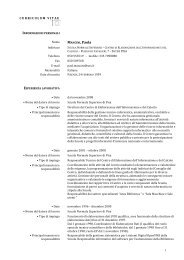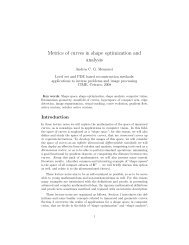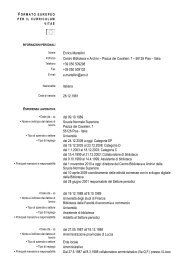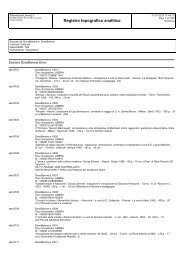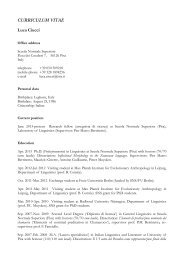Kolmogorov equation associated to the stochastic reflection problem ...
Kolmogorov equation associated to the stochastic reflection problem ...
Kolmogorov equation associated to the stochastic reflection problem ...
Create successful ePaper yourself
Turn your PDF publications into a flip-book with our unique Google optimized e-Paper software.
From (1.8) we deduce that<br />
D(x − Π K (x)) = Dd K (x) ⊗ Dd K (x) + d K (x)D 2 d K (x), ∀ x ∈ K c . (1.9)<br />
Finally, µ will represent <strong>the</strong> Gaussian measure in H with mean 0 and<br />
covariance opera<strong>to</strong>r<br />
Q := 1 2 A−1 .<br />
Since A is strictly positive µ is non degenerate and full. We set<br />
so that<br />
λ k = 1<br />
2α k<br />
, ∀ k ∈ N,<br />
Qe k = λ k e k , ∀ k ∈ N.<br />
We denote by E A (H) <strong>the</strong> space of all real and imaginary parts of exponential<br />
functions e i〈h,x〉 , h ∈ D(A). Then <strong>the</strong> opera<strong>to</strong>r D : E A (H) ⊂ L 2 (H, µ) →<br />
L 2 (H, µ; H) is closable in L 2 (H, µ) and <strong>the</strong> domain of its closure is denoted<br />
by W 1,2 (H, µ) (<strong>the</strong> Sobolev space).<br />
The following integration by parts formula for <strong>the</strong> measure µ is well known<br />
(see e.g. [8]). For any ϕ, ψ ∈ W 1,2 (H, µ) and z ∈ H,<br />
∫<br />
∫<br />
∫<br />
〈Dϕ, Q 1/2 z〉 ψ dµ = − 〈Dψ, Q 1/2 z〉 ϕ dµ + W z ϕ ψ dµ, (1.10)<br />
H<br />
where W z represents <strong>the</strong> white noise function,<br />
W z (x) =<br />
∞∑<br />
k=1<br />
H<br />
1<br />
√<br />
λk<br />
〈x, e k 〉 〈z, e k 〉, ∀ z, x ∈ H. (1.11)<br />
We recall that W z is a Gaussian random variable in L 2 (H, µ) with mean 0<br />
and covariance |z| 2 .<br />
2 The measure µ conditioned <strong>to</strong> K<br />
We denote by ν <strong>the</strong> Gaussian measure µ conditioned <strong>to</strong> K , i.e.,<br />
H<br />
ν(I) =<br />
µ(K ∩ I)<br />
, ∀ I ∈ B(H).<br />
µ(K)<br />
Since µ is full and ˚K is non empty, this definition is meaningful. We notice<br />
that, thanks <strong>to</strong> Hypo<strong>the</strong>sis 1.1(ii) <strong>the</strong> surface measure µ Σ is well defined (see<br />
[16]).<br />
7


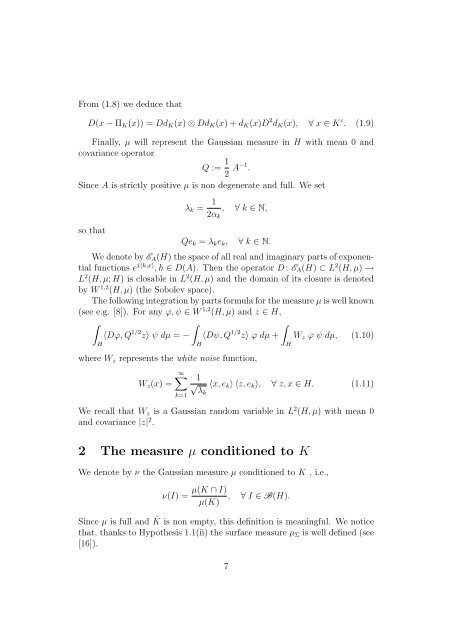

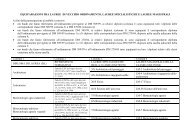
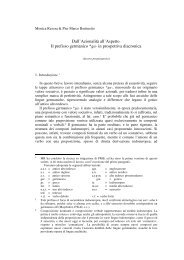
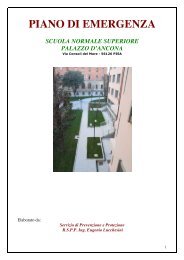
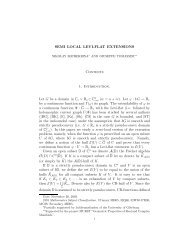
![4. Ghost [Å] vowels in French - Laboratorio di Linguistica](https://img.yumpu.com/49999334/1/184x260/4-ghost-a-vowels-in-french-laboratorio-di-linguistica.jpg?quality=85)



